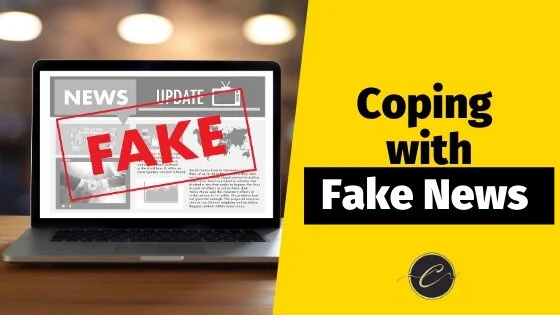Coping with Fake News
DON’T SPREAD FAKE NEWS.
I am going to give you the benefit of the doubt. You didn’t know it was fake because if you did, you wouldn’t have shared it.
Spotting fake news isn’t always easy, and it’s getting harder every day. But we have a responsibility to ensure that the information we are sharing is accurate.
Let’s be clear. I’m not talking about jokes, memes and obvious satire. I’m talking about “malicious fabrications”. These include information that is deliberately misleading, false, biased, xenophobic or downright dangerous.
Fake news was a problem long before the COVID-19 Pandemic. But the advent of a global crisis, literally at our front door, has exasperated the problem.
WhatsApp presents a unique challenge in the fight against spreading fake news
FactCheck.org is one of several organizations tracking and debunking fake news in real-time. Therefore, it is an excellent resource to double-check that juicy story before you embarrass yourself by sharing it.
So, here’s what we should do before we click share, forward or post.
Check the Source ... and the Author
Before you even read the article, check the source. Both the website and the author should be reputable. Sometimes the site seems legitimate, but it’s really a spoof of a credible website.
Cross Reference the Source
Big news is covered by multiple outlets. If you can’t find the content from another notable news source, take it with a grain of salt.
Read Past the Headline
The perfect headline is designed to catch your attention, not the summarize the piece. A sensational headline may be misleading, and so a more in-depth look is necessary.
Check the Citations
If the article quotes a quack, disregard it. It’s just that simple. Many fake news pieces include attribution from made up “experts” with clearly invented titles from fictions organization.
Check the Date
News is, by definition, new. So an old story could be misleading.
Sadly, lots of fake news comes to us directly through WhatsApp, like videos, images and plain text, making it harder to cross-reference.
Images and video can be altered, modified or otherwise manipulated to mask the actual source. Sometimes there is no obvious source to check, and sometimes the identified source is false.
To make matters worse, WhatsApp has no built-in filter. Facebook, Google and YouTube, along with many other sites do have (deficient) filters to weed out the most egregious content.
For WhatsApp, here’s what we should do before we click share, forward or post.
Analyze Forwarded Messages
WhatsApp is an excellent source for both information and misinformation. It is certainly not foolproof, but if a message is forwarded, it wasn’t natively generated by the sender. In which case, consider it carefully.
Check for Manipulation
This is even harder to do. I agree it may be challenging to detect when an image or video has been manipulated. But keep your eyes open for apparent edits that seem inconsistent.
Verify BEFORE Sharing
If you are not confident in the source, don’t share it. It is just that simple. Adding a lame disclaimer like, “I’m not sure if this is true,” doesn’t make it ok.
Report Abusers
If someone abuses the platform by spamming you with fake news, report them. Please do it for yourself and for everyone else that is likely being inundated with junk from the abuser.
We have the power to stop the spread of fake news and with great power comes great responsibility. Share responsibly.





